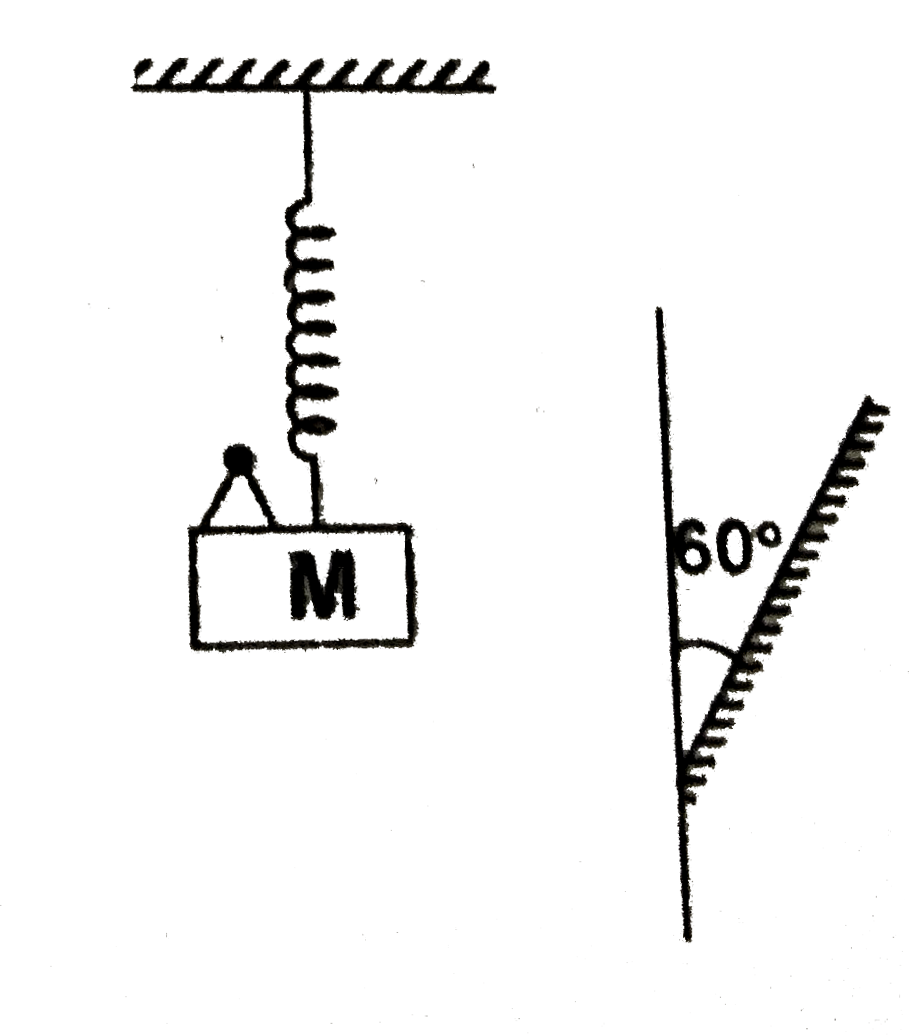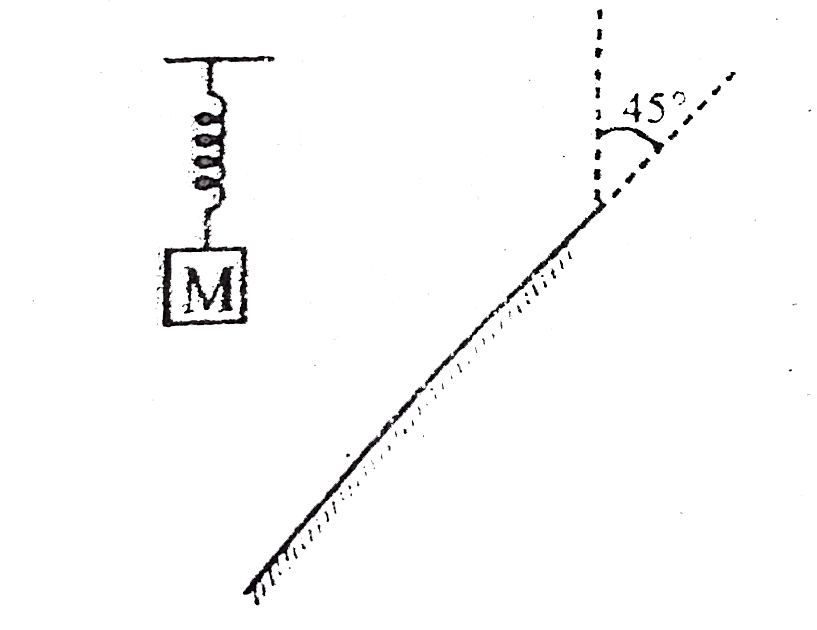The mass M shown in figure ocillates in simple harmonic motion with amplitude A.
The amplitude of the point P is

k1Ak2
k2Ak1
k1Ak1+k2
k2Ak1+k2
The correct Answer is:D
In series force remain same, if extension in k1 and k2 are x1 and x2 respectively.
Then k1x1=k2x2⇒x1+x2=A
⇒x1+k1x1k2=A⇒x1k1+k2k2=A
⇒x1=k2A(k1+k2)
Amplitude of point P will be the max, ext. in k1.
So amplitude of point P is k2Ak1+k2
Topper's Solved these Questions
- BOOK - ALLENCHAPTER - SIMPLE HARMONIC MOTIONEXERCISE - MCQ s one or more than one correct answers5videos
SIMPLE HARMONIC MOTION
- BOOK - ALLENCHAPTER - SIMPLE HARMONIC MOTIONEXERCISE - Paragraph3videos
SIMPLE HARMONIC MOTION
- BOOK - ALLENCHAPTER - SIMPLE HARMONIC MOTIONEXERCISE - Exercise-05 [A]39videos
SIMPLE HARMONIC MOTION
- BOOK - ALLENCHAPTER - RACEEXERCISE - Basic Maths (Wave Motion & Dopplers Effect) (Stationary waves & doppler effect, beats)24videos
RACE
- BOOK - ALLENCHAPTER - TEST PAPEREXERCISE - PHYSICS4videos
TEST PAPER
Similar Questions
Knowledge Check
- Question 1 - Select One
A particle oscillating in simple harmonic motion has amplitude 'a'. The distance from the mean position at which its velocity will be one half of the maximum velocity is
A√32aB√3aC2√3aD1√3 a - Question 2 - Select One
A particle executing simple harmonic motion with an amplitude A. The distance travelled by the particle in one time period is
AzeroBAC2AD4A
The maximum velocity of a particle, excuting simple harmonic motion with an amplitude 7mm, is 4.4m/s The period of oscillation is.
View SolutionA particle executes simple harmonic motion with an amplitude of 10 cm. At what distance from the mean position are the kinetic and potential energies equal?
View SolutionA particle is subjected to two simple harmonic motions of the same frequency and direction. The amplitude of the first motion is 4.0cm and that of the second is 3.0cm. Find the resultant amplitude if the phase difference between the two motion is
(a) 0∘
(b) 60∘
( c) 90∘
(d) 180∘View Solution
An insect of negligible mass is sitting on a block of mass M, tied with a spring of force constant k. the block performs simple harmonic motion with amplitude A in front of a plane mirror placed as shown in the figure the maximum speed of insect relative to its image will beView SolutionA pendulum is executing simple harmonic motion and its maximum kinetic energy is K1. If the length of the pendulum is doubled and it perfoms simple harmonuc motion with the same amplitude as in the first case, its maximum kinetic energy is K2 Then:
View SolutionAn insect of negligible mass is sitting on a block of mass M, tied with a spring of force constant K. The block performs simple harmonic motion with amplitude A infront of a plane mirror placed as shown. The maximum speed of insect relative to its image will be
 View Solution
View Solution
